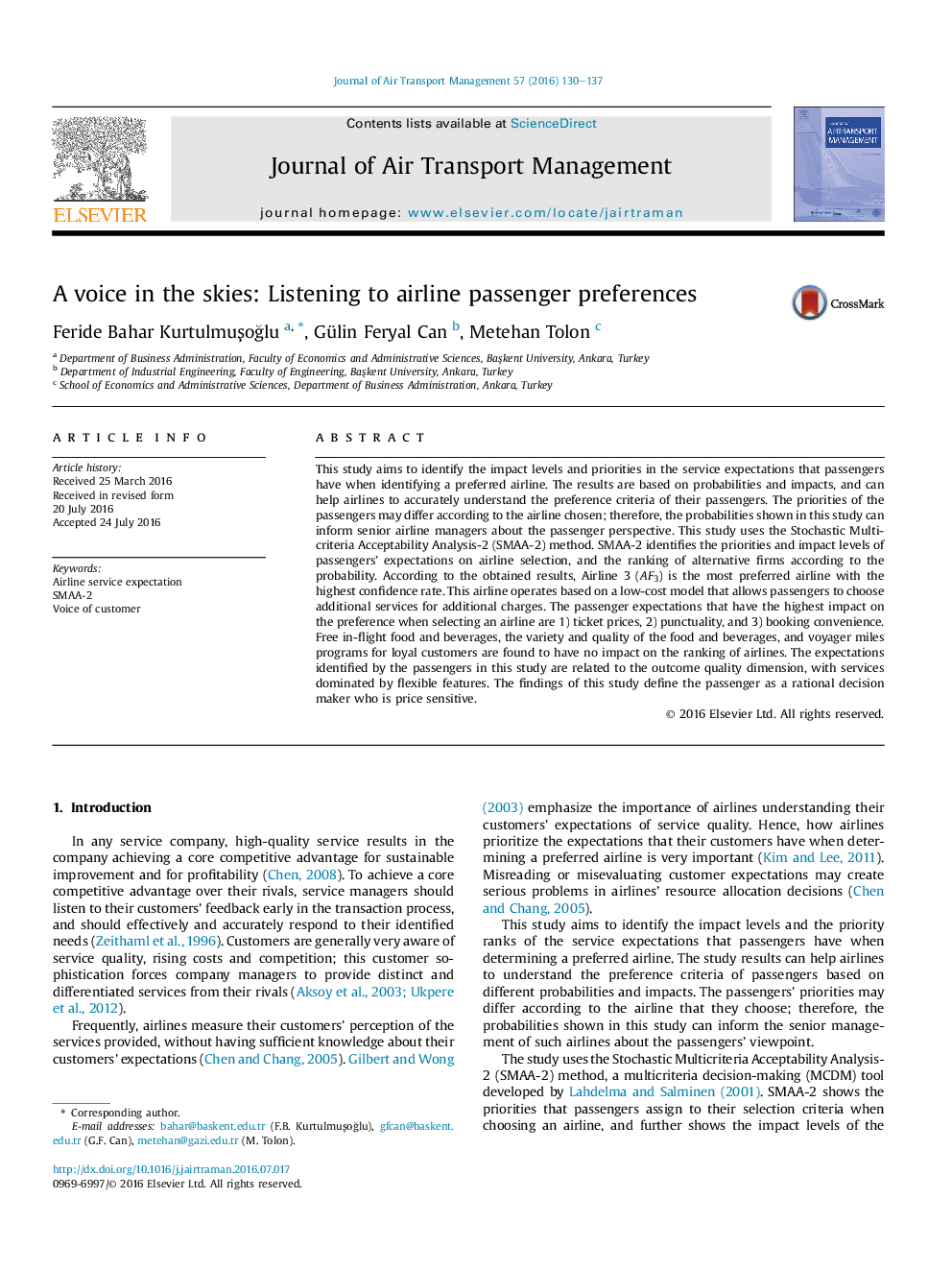| Article ID | Journal | Published Year | Pages | File Type |
|---|---|---|---|---|
| 7435419 | Journal of Air Transport Management | 2016 | 8 Pages |
Abstract
This study aims to identify the impact levels and priorities in the service expectations that passengers have when identifying a preferred airline. The results are based on probabilities and impacts, and can help airlines to accurately understand the preference criteria of their passengers. The priorities of the passengers may differ according to the airline chosen; therefore, the probabilities shown in this study can inform senior airline managers about the passenger perspective. This study uses the Stochastic Multicriteria Acceptability Analysis-2 (SMAA-2) method. SMAA-2 identifies the priorities and impact levels of passengers' expectations on airline selection, and the ranking of alternative firms according to the probability. According to the obtained results, Airline 3 (AF3) is the most preferred airline with the highest confidence rate. This airline operates based on a low-cost model that allows passengers to choose additional services for additional charges. The passenger expectations that have the highest impact on the preference when selecting an airline are 1) ticket prices, 2) punctuality, and 3) booking convenience. Free in-flight food and beverages, the variety and quality of the food and beverages, and voyager miles programs for loyal customers are found to have no impact on the ranking of airlines. The expectations identified by the passengers in this study are related to the outcome quality dimension, with services dominated by flexible features. The findings of this study define the passenger as a rational decision maker who is price sensitive.
Keywords
Related Topics
Social Sciences and Humanities
Business, Management and Accounting
Strategy and Management
Authors
Feride Bahar KurtulmuÅoÄlu, Gülin Feryal Can, Metehan Tolon,
